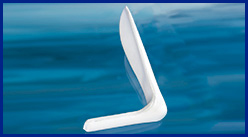Binder’s syndrome or maxillonasal dysplasia is a rare facial development disorder that affects the middle part of the face. It occurs as a result of underdevelopment of the nasal septum (microform achondrodysplasia)which is a driving force of midfacial growth. This results in a small premaxillary jaw segment with a flat midface, short nose with a low nasal bridge and an edge-to-edge or class III malocclusion. The remainder of the surrounding face is usually normal.
The usual aesthetic treatment for Binders’s syndrome is to increase the projection of the nose through serial surgeries up through the final growth years in late teens. Rib cartilage is typically used in a L-configuration to stretch out the nose as one grows. Orthodontics and possible surgery (maxillary advancement) may be needed in the teenage years based on the severity of the deformity. But

Their results show improved nasal shapes with a nasolabial angle increase from an average of 74 degrees to 94 degrees six months after the surgery. Complications included five patients (9%) including implant migration (3.5%), implant exposure (2%) and implant infection. (3.5%) The overwhelming majority of patients rated their results as much improved and were satisfied. Typical but self-resolving after surgery symptoms were stiff of the smile and upper lip movement.
This study is clinically relevant due to the sheer number of patients treated with a rare facial disorder. Such a large number of patients with tight nasal skin envelopes that were stretched out with an implant reconstruction is impressive as is their alloplastic outcomes. Whether further complications will be seen with longer followups can not be predicted but likely there will be some. This notwithstanding this clinical study shows that ePTFE nasal reconstructions can be successful.
Dr. Barry Eppley
Indianapolis, Indiana


